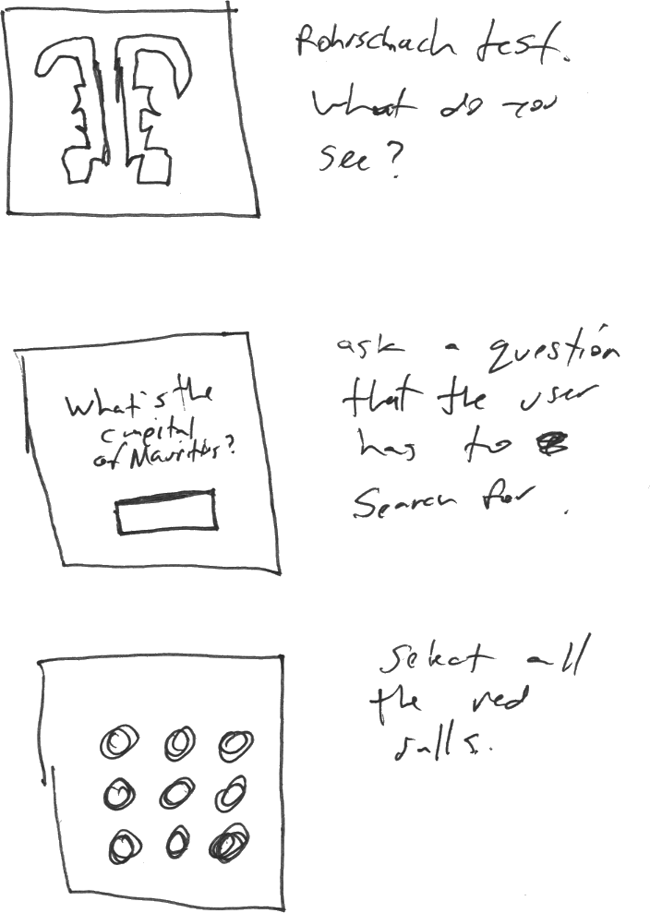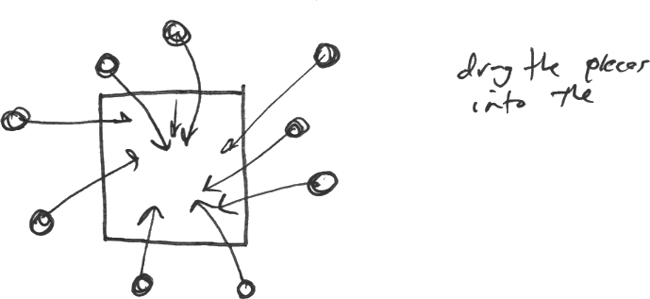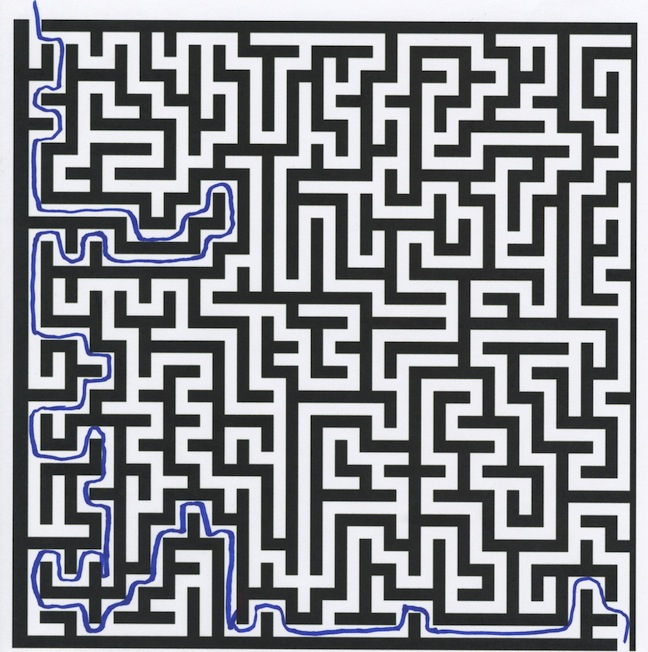Interventions
The most challenging aspect of this project was figuring out how to intervene when someone became too distracted. Based on my experiences using some of the applications described in the competitive review, I had learned a few different things:
- Users click through dialog boxes without thinking about them.
- Blocking websites can be effective, but it’s draconian.
- Requiring configuration before using the app pushes too much work to the user, and you risk having no impact whatsoever.
I was also reminded of suggestion by Jef Raskin in The Humane Interface of a dialog box that required a user to type in word in a dialog box, rather than clicking on a button. I used this as a jumping off point to consider more novel ways of interacting with the intervention.
Raskin, The Humane Interface, 22.
Initially, I considered a relatively simple interaction: A user would have to enter a randomly generated passcode to dismiss the dialog. If a user got too distracted, the user’s coworker would get a text message with the passcode, and the user would have to go and retrieve the passcode. I though about a few other options, too, such as requiring a Foursquare checkin at a remote location to encourage users to leave their desks when they’re too distracted.
During a workshop, I ran my idea by Jack Schulze and Matt Jones who were visiting from BERG in London. They suggested I push the idea further. What if the application took some action that forced users to move? What if the application could order coffee for you, so that you had to take a break to pick it up?
After those suggestions, I spent some time brainstorming new ideas for how to intervene. I considered ideas that ranged from passcodes, games, creative activities, interaction with social networks, and location checkins.



None of the ideas felt correct, though. All of the interventions I had considered would discourage distraction, but the way in which it behaved did not feel clear or consistent with the application. My advisor, Paul, suggested that I revisit or more clearly define the values of the brand, and use those values to decide on the interventions to implement.
I went back to the brand strategy, which had established a few clear values:
- Meditative/Zen-like
- Slow
- Measured and mindful
- Positive, not punishment
It became clear that the kinds of interventions I was looking for would need to be obstacles that would slow you down, but would remain positive. I went back through my interviews and examined what people do when they’re procrastinating or taking a break, and things like cleaning, sorting, and zoning out came up. I would need interventions that had those qualities, but also:
- Simple to understand, or already understood.
- Interesting, but not fun. Users should not want to spend their time working on the interventions.
- Scales well, so that it could be very easy or very complex.
- Should involve a social component so that coworkers can be involved.
I did some more sketching, and came up with a few ideas that were consistent with the values I had decided on:


I met with a group of my classmates to get feedback, and they helped me come up with a few additional ideas:
- Hiding instructions in a paragraph so that the user has to read carefully to continue.
- Hiding an interactive button in a paragraph of text.
- Create a simple word problem that must be solved.
- Use the Stroop Effect, most commonly for the “say the color, not the word” puzzle.
- Connect the dots, but use letters rather than numbers.
- Counting the number of sides of a shape.
- Click objects to dismiss them, and gradually clear the screen.
- Try sudoku, tangram, and other existing puzzles.
After the meeting, I decided to choose one specific intervention to implement for the prototype: the maze. Of all of the ideas I had generated, it felt the most appropriate to me. A maze also seemed like a good metaphor for the problem of distraction, when someone feels lost in all of the information they receive.
Most of the user interface in the application that would contain the maze was complete by this point, so I immediately got to work in implementing a simple version of a maze generator.
I started with a basic maze generator. I would print out a schematic for the maze and fill in the lines by hand.

I tried printing out some of the mazes so that participants could test them out to see if they were too easy or too hard..


After a certain point, my friends decided that the maze was too hard, and they would give up. This was the implicit goal of creating the intervention: It’s not fun enough to work on it to bother completing it.
Next, I moved the maze generator into the prototype, and inserted it into the prototype. I still had to resolve the social aspect of the intervention, however. Initially, I had planned to develop an interactive way for users to ask their coworkers for help and encourage social in-person interactions. Later, I simplified a bit further, by introducing the concept of a lock into the maze, so that a user would have to ask a coworker to unlock the maze for you to finish. I ended up with an even simpler concept: For any maze, of any complexity, you could ask a coworker to “unlock” it for you. By doing so, a coworker could allow you more time to distract yourself.
Copyright © 2010 - 2011 Eric St. Onge
Please send questions or comments to eric at ericstonge dot com.